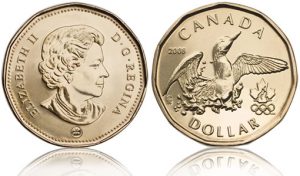 Yesterday’s trade saw USD/CAD within the range of 1.3064-1.3187. The pair closed at 1.3083, losing 0.45% on a daily basis. It has been the 31st drop in the past 67 trading days. The daily low has been the lowest level since April 4th, when a low of 1.3003 was registered. USD/CAD has trimmed its advance to 0.27% so far during the current month, following two straight months of decline.
Yesterday’s trade saw USD/CAD within the range of 1.3064-1.3187. The pair closed at 1.3083, losing 0.45% on a daily basis. It has been the 31st drop in the past 67 trading days. The daily low has been the lowest level since April 4th, when a low of 1.3003 was registered. USD/CAD has trimmed its advance to 0.27% so far during the current month, following two straight months of decline.
At 6:36 GMT today USD/CAD was losing 0.40% on the day to trade at 1.3031. The pair touched a daily low at 1.3028 at 6:35 GMT, undershooting the lower range breakout level (S4), and a daily high at 1.3100 during the early phase of the Asian trading session.
Canadas dollar received support, as crude oil futures rose a second straight day on April 6th. Wednesday marked the 40th gain in oil prices out of the past 78 trading days. Oil futures for May delivery went up as high as $38.00 per barrel on April 6th and closed at $37.96, surging 3.46% on the day. As of 6:43 GMT today the commodity was edging up 0.47% to trade at $38.14, after going up as high as $38.29 per barrel earlier.
On Thursday USD/CAD trading may be influenced by the following macroeconomic reports and other events as listed below.
Fundamentals
United States
Initial, Continuing Jobless Claims
The number of people in the United States, who filed for unemployment assistance for the first time during the business week ended on April 1st, probably decreased to 270 000, according to market expectations, from 276 000 in the preceding week. The latter has been the highest number of claims since the business week ended on February 26th, when a revised down number of 277 000 claims was reported.
The 4-week moving average, an indicator lacking seasonal effects, was 263 250, marking an increase by 3 500 compared to the preceding weeks unrevised average.
The business week, which ended on March 25th has been the 56th consecutive week, when jobless claims stood below the 300 000 threshold, which suggested a healthy labor market. This has been the longest streak since 1973.
Initial jobless claims number is a short-term indicator, reflecting lay-offs in the country. In case the number of claims met expectations or fell further, this would have a moderate bullish effect on the US dollar.
The number of continuing jobless claims probably rose to the seasonally adjusted 2 189 000 during the business week ended on March 25th from 2 173 000 in the preceding week. The latter has been the lowest number of claims since the business week ended on November 20th 2015, when 2 161 000 claims were reported. The figure also represented a decrease by 7 000 compared to the revised up number of claims reported in the week ended on March 11th. This indicator reflects the actual number of people unemployed and currently receiving unemployment benefits, who filed for unemployment assistance at least two weeks ago.
The Department of Labor is to release the weekly report at 12:30 GMT.
Change in consumer lending
The money amounts, borrowed by US consumers probably increased by USD 14.00 billion in February, according to market expectations, following a surge by USD 10.54 billion in January. Revolving credit decreased by USD 1.05 billion in February, compared to a revised down increase by USD 5.47 billion in January. At the same time, non-revolving credit increased by USD 11.59 billion in February, following a revised up surge by USD 15.92 billion in January.
Given the current state of the economy, a higher-than-expected amount borrowed is usually considered as dollar positive, as it implies a potential increase in consumer spending and accelerated growth, respectively. The Board of Governors of the Federal Reserve is to release the official numbers at 19:00 GMT.
Fed Chair Yellens statement
At 21:30 GMT Federal Reserve Chair Janet Yellen is expected to take a statement. Since market players will be paying a close attention to this event in search of clues over how the policy tightening cycle may develop in the future, a moderate-to-high volatility of the currency pairs containing the US dollar is expected.
Canada
Building Permits
The overall value of building permits in Canada, issued by municipalities, probably increased 4.8% in February, according to expectations. The total value of building permits in the country went down 9.8% to reach CAD 6.374 billion in January compared to a month ago, following a revised up CAD 7.070 billion in December.
Building permits, as an indicator, provide information regarding demand in Canada’s housing sector. In case the total value of permits rose more than expected in February from a month earlier, this would have a limited bullish effect on the Canadian dollar. Statistics Canada is expected to release the official numbers at 12:30 GMT.
Daily and Weekly Pivot Levels
By employing the Camarilla calculation method, the daily pivot levels for USD/CAD are presented as follows:
R1 – 1.3094
R2 – 1.3106
R3 (range resistance) – 1.3117
R4 (range breakout) – 1.3151
S1 – 1.3072
S2 – 1.3060
S3 (range support) – 1.3049
S4 (range breakout) – 1.3015
By using the traditional method of calculation, the weekly pivot levels for USD/CAD are presented as follows:
Central Pivot Point – 1.3051
R1 – 1.3245
R2 – 1.3478
R3 – 1.3672
S1 – 1.2818
S2 – 1.2624
S3 – 1.2391





